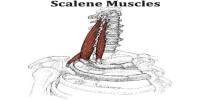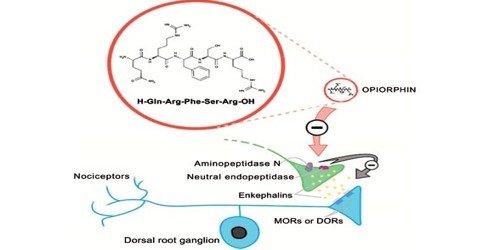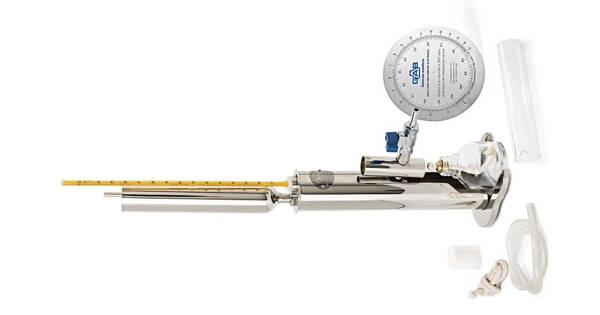Hyoid Bone
Definition
Hyoid bone is the only bone located in the anterior neck. It is A U-shaped bone at the base of the tongue that supports the muscles of the tongue. It is a bone in the neck which protects the esophagus and facillitates a wide range of muscle movements required for speaking and swallowing.
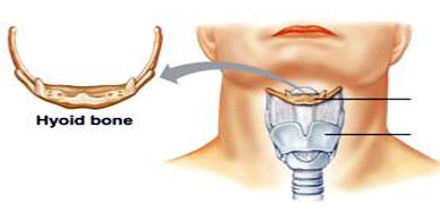
Hyoid bone is located between the chin and the thyroid cartilage. It is also at the base of the mandible, or lower jawbone.
Unlike other bones, the hyoid is only distantly articulated to other bones by muscles or ligaments. The hyoid is anchored by muscles from the anterior, posterior and inferior directions, and aids in tongue movement and swallowing. The hyoid bone provides attachment to the muscles of the floor of the mouth and the tongue above, the larynx below, and the epiglottis and pharynx behind.
Structure and Functions of Hyoid Bone
Hyoid bone can be divided into three component parts: the body of the hyoid, the greater cornua, and the lesser cornua. It does not directly articulate with other bones. Instead, it is connected to neighbouring bones by muscular and ligamentous attachments. Muscles that insert on the upper surface of the bone are known as suprahyoid muscles, while those attached to the lower surface are infrahyoid muscles.
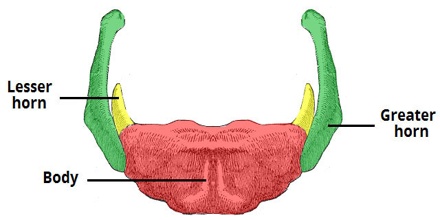
The bone has a central body (forming the center of the “U”) with two smaller protruding structures on the superior surface (lesser horns) and two larger bony protrusions from the body (greater horns). The body is quadrilateral, laterally stretched and irregular in shape. It forms the convexity of its classical U-shape, with its outer (anterior) border forming the outer convexity and the inner (posterior) border forming the concavity. There is a vertical median ridge located in the midline of the body that rarely projects to the lower surface. The body is situated at an oblique angle with the anterior end pointing superiorly and the posterior end pointing inferiorly. Immediately posterior to the body of the hyoid bone is a bursa, thyrohyoid membrane and areolar tissue that separates the hyoid bone from the epiglottis.
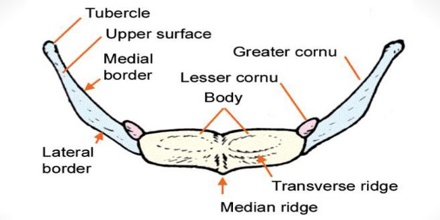
This bone also provides a place of attachment for many muscles associated with the mouth’s floor, as well as the larynx (voice box), pharynx (throat), and epiglottis (flap of tissue located at the top of the larynx). While the hyoid bone provides protection to these organs, it can be fractured if exposed to excessive forces. Typically, a broken hyoid results from forced strangulation.
Hyoid bone is present in many mammals. It allows a wider range of tongue, pharyngeal and laryngeal movements by bracing these structures alongside each other in order to produce variation.
Reference:

